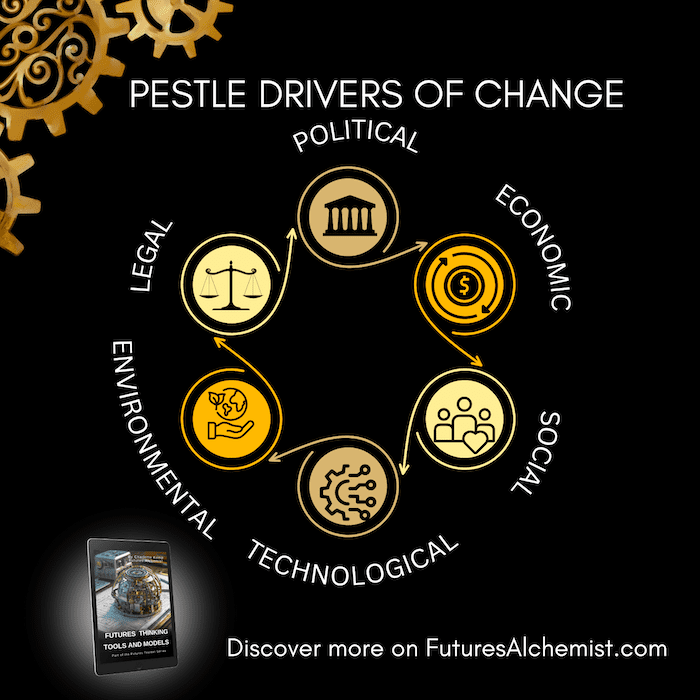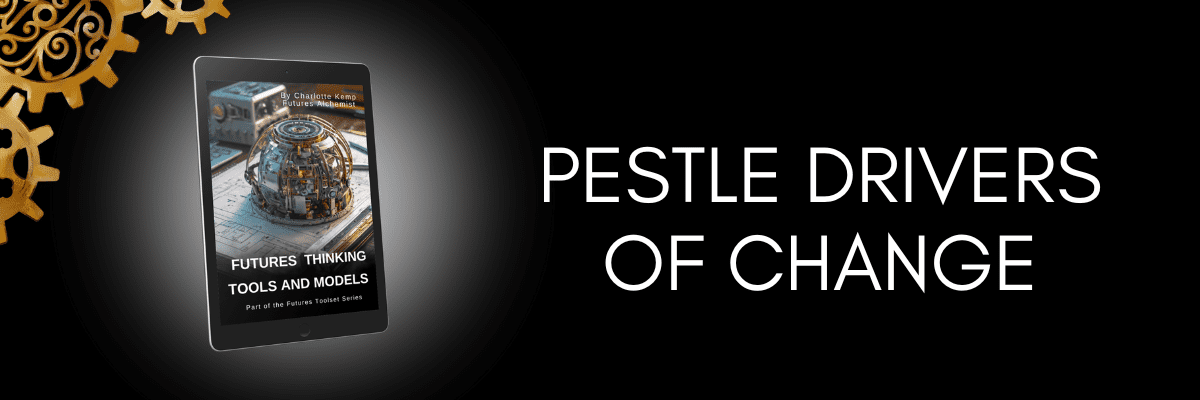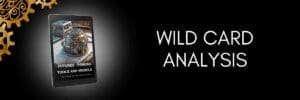
Introduction
PESTLE is one of the most widely used frameworks in strategic foresight and environmental scanning. It offers a structured method to analyse the external forces shaping the operating environment by categorising them into the six domains.
A structured lens for scanning the forces shaping the future
The PESTLE framework helps strategists make sense of complexity by breaking down change into manageable categories. It provides both a map of the current landscape and a vocabulary for exploring future shifts. Other versions include PEST and STEEP, however PESTLE is the most comprehensive version.
What It Is
The PESTLE framework is a diagnostic and exploratory tool. It helps users to identify signals of change, emerging trends, challenges, and opportunities across six key dimensions of the external environment. Once we identify them, then we can begin to craft a response.
Political Includes government policy, regulatory shifts, global governance, trade relations, political stability, nationalism, and activism. E.g. upcoming elections, shifts in foreign policy, decentralisation of power.
Economic Covers inflation, interest rates, economic growth, trade patterns, labour markets, and global inequality.
E.g. rise of digital currencies, global recession risks, changes in employment structures.
Social Captures cultural shifts, generational values, education, demographics, identity, inclusion, and public health. E.g. ageing populations, youth activism, mental health awareness, urbanisation.
Technological Includes innovation, disruption, automation, connectivity, AI, biotech, and the digital divide. E.g. generative AI, 5G rollout, surveillance technologies, smart cities.
Legal Addresses legal systems, regulation, compliance, intellectual property, data privacy, and human rights legislation. E.g. GDPR, digital copyright law, ethical frameworks for tech.
Environmental Covers climate change, sustainability, natural disasters, resource management, and ecological consciousness. E.g. net-zero goals, water scarcity, circular economy initiatives, biodiversity loss.
These domains are interconnected, but separating them helps ensure that scanning and analysis are comprehensive rather than narrow or biased by one’s field of expertise.
Why It Works
PESTLE works because it is clear, flexible, and adaptable. It creates a shared language for discussing complex forces of change and helps people look beyond their immediate operational view.
Its key strengths include:
- Breadth: Ensures that foresight isn’t limited to technology or trends that are already top-of-mind.
- Clarity: Organises information so teams can see patterns, dependencies, and emerging risks.
- Accessibility: Easy to teach and apply across sectors and team roles.
Comparability: Facilitates comparison across countries, industries, or future scenarios.
Most importantly, it trains people to scan horizontally, noticing signals across sectors, and longitudinally, looking at how today’s issues might play out over time.
How to Use It
The PESTLE framework is typically used as part of a Horizon Scanning or Drivers of Change process.
To use it effectively:
- Create a template or canvas with the six PESTLE categories.
- Scan widely — using news, research, trend reports, expert interviews, and local observations.
- Identify and document signals of change in each category.
- Cluster signals into trends or drivers and discuss their potential impact on your organisation or sector.
- Analyse interactions — for example, how a technological development may drive social change, or how environmental policies could shift legal frameworks.
The tool is often used before engaging in scenario planning, strategy formulation, or risk management, as it uncovers the forces that shape future conditions.
In Summary
PESTLE Drivers of Change is a foundational foresight tool that allows practitioners to scan, interpret, and respond to the complex external forces shaping our world. It reminds us that the future is not shaped by any one factor but by a constellation of interlocking systems.
In a time of accelerating transformation, PESTLE offers structure without rigidity, encouraging a deeper understanding of the context in which we imagine and build preferred futures.
Origin
The PESTLE analysis originated from the 1960s work of Harvard professor Francis Aguilar, who developed an “ETPS” model (Economic, Technical, Political, Social) in his 1967 book, ‘Scanning the Business Environment’. The addition of Legal and Environmental morphed the model over the years.




